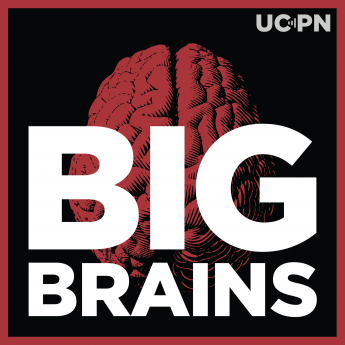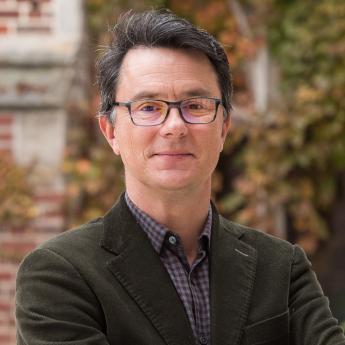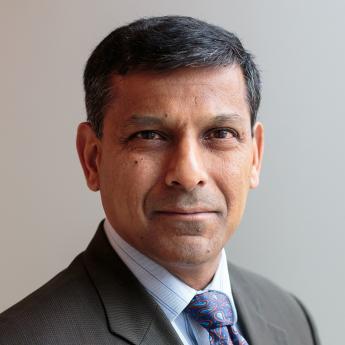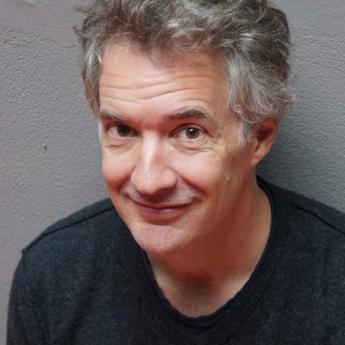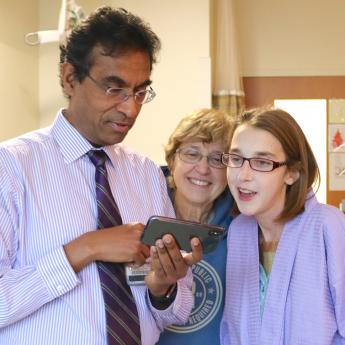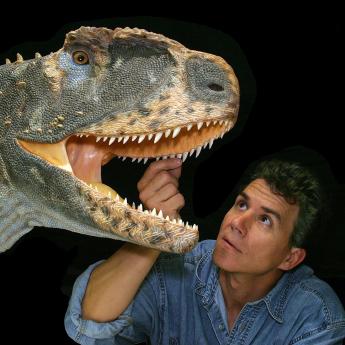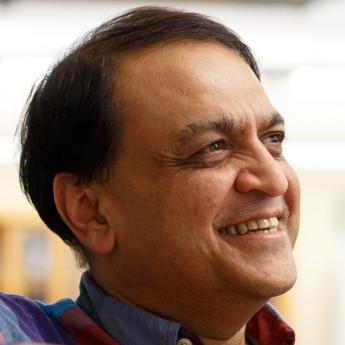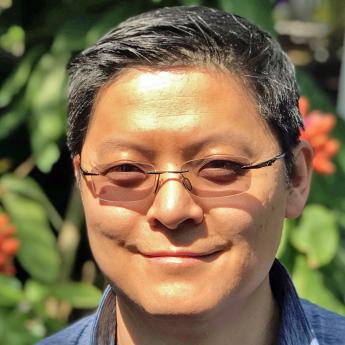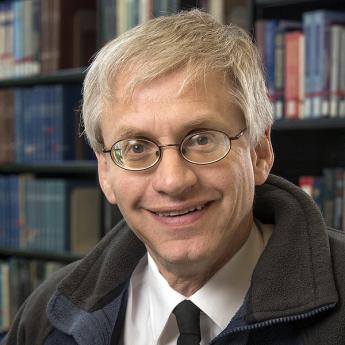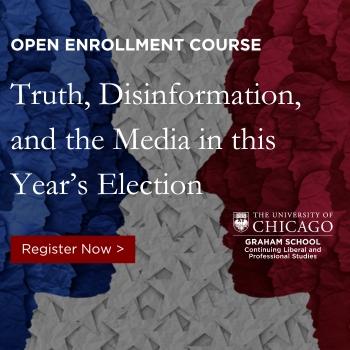Show Notes
We used to think aging inevitably led to memory loss, but a small group of people—known as SuperAgers—are defying the odds. These individuals, all over 80, have the memory performance of someone in the 50s. The question is: how?
One of the leading experts studying SuperAgers is University of Chicago neurologist Emily Rogalski. She explores the fascinating science behind SuperAgers—uncovering what makes their physical brains different and how their lifestyle choices could be the key to a having a sharper, healthier brain well into old age.
Are you or someone you know a SuperAger? Get involved with the project here.
Subscribe to Big Brains on Apple Podcasts and Spotify.
(Episode published October 31, 2024)
Subscribe to the Big Brains newsletter.
Please rate and review the Big Brains podcast.
Related:
- A Peek Inside the Brains of ‘Super-Agers’—The New York Times
- ‘Super agers’ have incredibly sharp memories, according to new research — Independent
- ‘SuperAgers’ have memories similar to those 20 to 30 years younger. Here’s how — Fortune
- UChicago receives $13.2 million grant to test digital dementia intervention
Transcript:
Paul Rand: When it comes to our health and getting older, there’s one term that everyone is talking about these days.
Tape: What’s called superagers. You know you meet people in life and you’re like, “Wow, that person looks or acts literally half their age.” Well, it turns out that literally there are some of us that age slower than others, and those people are referred to as superagers.
Tape: Have researchers now found a way to unlock our brain’s fountain of youth?
Tape: The brains of some so-called superagers seem to stay young, and researchers believe they may show us how to improve our mental health.
Emily Rogalski: I operationalize this term super-aging to be very specific to a group of individuals who are over age 80 that have memory performance at least as good as individuals in their fifties and sixties.
Paul Rand: That’s Emily Rogalski, a professor of neurology at the University of Chicago, and one of the world’s leading experts on superagers.
Emily Rogalski: Well, I think most people that I talk with, if I start talking about the word superagers, they immediately draw a picture in their mind of, oh, I have someone like that. It’s my mom, or it’s my uncle, or it’s my neighbor. People have encountered individuals who are doing better than one might expect, but yet they don’t get a lot of airtime. When we think about aging, we tend to focus on those negative aspects of aging.
Paul Rand: Healthcare and medicine often follow one track. We look at people who are sick and work backward to figure out how they got that way. But Rogalski is trying to change that by starting with people who are extraordinarily healthy.
Emily Rogalski: It’s good if we’re talking about positive trajectories of aging, that’s a step in the right direction, and that we’re thinking about what can be in aging instead of what can’t be.
Paul Rand: How do people become superagers? Is it something they eat or drink, or maybe an exercise routine they follow, or perhaps it’s how many friends they have in their lives, or it just may simply be the result of a genetic lottery? Rogalski’s research has started to uncover all sorts of fascinating insights.
Emily Rogalski: By studying these individuals, we get a fuller picture of the aging spectrum. If we just look at individuals who have Alzheimer’s disease and related dementias, we can identify some risk factors and then try to target how to mitigate that risk or reverse that risk. But, that really only gives you the left side of the bell curve, if you will. Where, identifying people who are doing extraordinarily well gives us the opportunity to identify protective factors.
Paul Rand: Welcome to Big Brains, where we translate the biggest ideas and complex discoveries into digestible brain food. Big Brains, Little Bites from the University of Chicago Podcast Network. I’m your host, Paul Rand. On today’s episode, the science of superagers. The University of Chicago Leadership and Society Initiative guides accomplished executive leaders in transitioning from their longstanding careers into purposeful encore chapters of leadership for society. The initiative is currently accepting candidacies for its next cohort of fellows. Your next chapter matters, for you and for society. Learn more about this unique fellowship experience at leadforsociety.uchicago.edu. If you want to understand how someone in their eighties can have the memory of a 50-year-old, there’s one obvious place to start.
Emily Rogalski: My interest in aging wasn’t there originally. My interest actually started with the brain. I grew up the daughter of a school teacher, and my mom taught kids with learning challenges. What I learned from having the opportunity to be in her classroom and work with some of those kids and see them over time was how brilliant they were, but they learned a little bit differently. At a young age, I had a very naive question of, hey, I wonder what’s different about their brains? That sparked my interest in neuroscience, and always thought that I’d be working at that end of the spectrum.
Paul Rand: With kids.
Emily Rogalski: With kids, that’s right.
Paul Rand: Okay.
Emily Rogalski: Then, life has a funny way of taking you down different and unexpected paths. When I entered graduate school, it was a requirement to do some rotations, and that was a good thing. I learned about the opposite end of the spectrum, so individuals who had Alzheimer’s or related dementia. I learned about a rare dementia called primary progressive aphasia where, instead of there being memory loss, there was actually preservation of memory, but challenges with language. In this dementia syndrome, individuals tend to be in their fifties or sixties instead of seventies or eighties. At the time, there was very little research happening in this space. Really started down the path of this aging and dementia work, and then over time got more exposed to different trajectories of aging. Particularly then again, another group on the margins, if you will, are those who are over age 80 that are doing extraordinarily well.
Paul Rand: Well, before we start jumping into the whole concept of superagers, I would love just to set a baseline foundation. You talk about this a little bit in terms of, what the world happens to our brains as we age? What do we need to understand on a foundational level?
Emily Rogalski: Our thinking about aging trajectories and what happens as we age has really changed over time. It was once believed that we all got old and that we had only one path for aging, and that was to become senile. We now know that things are much more complex and we understand that our memory and thinking abilities really tends to peak in our twenties or maybe even thirties. Just like the exterior of our body experiences some wear and tear as we age, we do see that there are changes that are happening to our brain. One of those is that the outer layer of the brain, or the cortex, tends to shrink a bit over time, and there’s some acceleration of that as we enter our sixties.
Paul Rand: Okay, so when it actually comes to the cortex, what is causing that shrinkage?
Emily Rogalski: Also another great question, and one that’s not really well answered. We’ve started to dig into this a little bit. Is it that there are fewer neurons, and there are really mixed results in the literature on some of this work, versus, is it the size of the neurons that is changing? Or really understanding which diseases or chronic challenges are maybe having different influences on different aspects of the brain, all which could end up with cortical thinning at the end of the day, but due to different causes.
Paul Rand: If we’re talking about the shrinkage, tell me the impact. Is it in memory, executive skills, motor skills? Where are we seeing that shrinkage making an impact?
Emily Rogalski: When we look at what the changes that occur in older adults, it really matters just like real estate, location, location, location of what cognitive changes that you might see. If that shrinkage occurs more in language related networks, then we’re going to see an impact on language. If those changes occur in areas of the brain that are more important for attention or executive function, then we may see challenges with planning and attention. If those changes occur more in memory related regions, then we’ll see that impact on memory. This is why we look at the spatial distribution of changes as well as the magnitude of that change.
Paul Rand: This shrinkage is a big part of what makes superagers so unique.
What is a superager?
Emily Rogalski: When we look at a biologic standpoint, when we look at the structure of the brain of superagers, they tend to look more like 50-year-old brains than they do like 80-year-old brains. Cortical thickness of the superagers is not significantly thinner than that of 50 to 60 year olds. That outer layer of the brain, the cortex is not atrophying at the same rate. Atrophying being it’s not thinning. Then we asked a question over time, well, do the superagers show the same rate of thinning as their 80-plus year old peers, or do they seem to be on a different trajectory? What we see there is that they do tend to be on a different trajectory. The average agers are thinning in that outer layer of the cortex at a rate that’s more than two and a half times that of a superager. Then there’s a region in the anterior cingulate, which is actually thicker in the superagers than it is in the 50 to 60 year olds.
Usually at this point people are saying, well, what is the anterior cingulate? Do I want a thicker one? If so, how do I get one? I cannot answer all of those questions, but I can give you a little peek there. The anterior cingulate is a region that’s really important for attention, and attention supports memory. In order to remember something, you have to be attending to it first. Because we found that thicker anterior cingulate, it led to a whole new line of research and understanding, okay, well, what are the molecular features here? The first superagers that came to autopsy, because we run a longitudinal study where people come back over time and ultimately give that gift of donating their brain at the time of death, we have this opportunity to look under the microscope.
We saw that superagers have an abundance of a special type of called Von Economo neurons. These neurons have only been described in higher order species. They’re thought to have some relationship to social interactions and social behaviors. The loss or abnormal development of them is seen in autism, schizophrenia, bipolar disorder, as well as in a type of dementia called frontotemporal dementia, where there’s changes in personality and judgment. These are starting to get at not only structural features that we can see on MRI, but also then we can dig deeper and understand, what are the cellular molecular features there?
One of the goals of our study is to not only understand what are the biologic features and factors associated with superagers, but what are also the psychosocial features? What are the genetic factors? What are the lifestyle factors? How does family history play a role? So far, what we’ve seen is that superagers do have unique biologic, genetic, as well as lifestyle factors. We’re at the beginning of this story, not at the end.
Paul Rand: The next chapter of that story after the break. If you’re enjoying the discussions that we’re having on this program, there’s another University of Chicago Podcast Network show that you should check out. It’s called The Pie. Economists are always talking about the pie, how it grows and shrinks, how it’s sliced, and who gets the biggest share. Join veteran NPR host Tess Vigeland as she talks with leading economists about their cutting-edge research and key events of the day. Hear how the economic pie is at the heart of issues like the aftermath of a global pandemic, jobs, energy policy, and much more. Everyone wants to know how to become a superager. While genetics play a huge role, the question is, are there lifestyle factors we can change to give ourselves a better shot of ending up in this category?
Emily Rogalski: When we look at other factors like psychosocial factors and how people approach life, we see that superagers tend to report stronger social relationships compared to their cognitively average peers. This fits really well with the larger literature talking about the negative consequences of social isolation, the negative consequences of loneliness, and the positive aspects of maintaining social engagement. Now, the first finding we saw here was on a survey, so we didn’t have a lot of deeper information of, what are those social relationships? Who are they talking to? How often are they doing that? Now we’ve followed that up. In our subsequent studies, we have superagers wearing wearable sensors in their daily lives. We’re able to monitor how much activity they’re getting. Is that activity vigorous? How often are they communicating with others? We can look at those social interactions, but now have some extra objective measurements to complement these subjective measurements that we got in the survey.
Paul Rand: Just to cover off on this area, whether it’s diet or demographic differences or other things, those don’t play into this in the way you may think they would, do they?
How do people become superagers?
Emily Rogalski: Yeah. When we look at diet and exercise, we see a wide variety. We see superagers who have paid really close attention to their diet, and then others not so much. There’s a superager who I know tells a story of, “Oh gosh, it couldn’t be my diet. I ate way too many TV dinners growing up.”
Paul Rand: Yep, yep.
Emily Rogalski: I don’t want that to give the impression that diet is not important and that we should all eat hamburgers and french fries for every meal. Likely, some of the tolerability of one individual’s diet versus another probably has some interplay with their genetics and what their tolerance there. There’s likely to be more than one pathway, but when we use really precision-based approaches to understanding, we can start to know the components that have been key to getting to these different pathways. We look at exercise too. We also see that same variability, where some people are really vigorously exercising, whether that’s high intensity work in the pool or riding their bike tens of hundreds of miles. While others who may be not as physically capable, but are still doing stretching classes or chair stretching classes. We’ve also had people who have firmly told me, “You know what? I’ve never exercised much and I don’t plan to start, so please don’t ask me to.” We take all kinds there.
Paul Rand:
Some of these things as you’re getting to it, whether it’s your diet, your genetics that go into this, your exercise levels, you can’t really point into these and say a Mediterranean diet is one of the keys to becoming a superager. There’s benefits of it, but they’re not adding up consistently as, this is one of the key criteria.
Emily Rogalski:
Well, yeah. What I would say is that the recipe is not, it has to be this diet plus this exercise equals super-aging. We don’t have a precise recipe in that way. I do think both diet and exercise are important. We know that there are benefits to both. I think yet another component that is important is exercising our brains. People will often ask me, “Hey, should I do a crossword puzzle every day? Is the New York Times the perfect one or is there another one?” My answer to that usually is, “Do you like crossword puzzles? Do you find them challenging?” Because if you don’t like them and they cause you a lot of angst, then the stress that is induced by the crossword puzzle will far outweigh any brain benefit that you would ever gain. Likewise, if you don’t find them to be particularly challenging, then the brain boost that you’re going to get from them is also likely not to be that great.
I think this really hearkens back to a great study that was done by Denise Park years ago where she took a group of individuals and she had one group that learned photography, another group that learned to knit, and then a third group that I think sat on the couch and watched TV, but did something benign. The question was, which one has the most brain benefit? In that study, she found that both knitting and photography were equal. The key there was the novelty, the fact that there was new learning that was happening in each group.
Paul Rand: Got it.
Emily Rogalski: I think this is an important take home point for as one thinks about what can they do in their daily life. It’s finding something that is enjoyable to you, but also challenging. I think this also ties in nicely with what we see in superager’s report of strong social engagement. It turns out, having a conversation is actually a good workout for your brain and maintaining social connection. Because I don’t know exactly what you’re going to ask me next, and whenever you ask it to me, my brain has to do some mental gymnastics real quickly to say, “Okay, well what is it that I want to say back?” That’s a good activity. My brain likes that kind of responsivity that it has to have in the moment. That’s one of the ways that social connection is important.
Of course, social and connection is also important from an emotional standpoint. When we think about our lifestyle choices, I say if you’re thinking about calling your friend today on the way home from work, you should do it. It might make you feel good and there may be some brain benefit. If you’re thinking about taking up a new activity, you should do it. Your brain likes new things. I think those are pretty safe features. We can’t give a recipe of how you make your cortex thicker, but we do know that our brains are more pliable, plastic, and capable of neurogenesis in a way that we didn’t think was possible several decades ago, and so there’s a lot of possibilities for the future.
Paul Rand: All right, if I was doing photography or knitting or any of these other activities and I wanted to have an alcoholic drink, would you discourage me?
Emily Rogalski: Oh, goodness. Well, the superagers, many of them would say no. In fact, we asked them why they think that they are a superager, and some of them have firmly told us it’s because they have a martini at five o’clock. Now, I am not going to support, certainly having a lot of alcohol is not good for your brain, but there are many who would advocate that they enjoy a beverage here or there.
Paul Rand: It almost seems too easy, and I was hoping for some miracle. But just saying watch what you eat, watch what you drink, get more exercise, and stay mentally engaged.
Emily Rogalski: If we had the magic answer of what exactly the precise thing is to do to maintain your perfect cognitive health, we would be in great shape. But, we’re not there yet. We’re bombarded in our daily lives by media that says, “Hey, take one of these, or just do this computerized test and you’ll be protective.” My general rule is that if it’s just one thing, it’s likely to not be it. Our brains are much more complex than just one element.
Paul Rand: If we looked out 20 years and you said, “I’m going to dream, and if I could think of the applications that my work could present to the world and benefit the world,” where do you see that potentially going? Where could we be in 20 or 30 years? Both from a scientific point of view, but also a human longevity point of view.
Emily Rogalski: I think there’s tremendous potential, one in just changing the conversation. There’s tremendous stigma around aging, and there are lowered expectations of what’s possible in aging, because the majority of what is in our media and on the television is really focused on that negative aspect. How old is too old to do X, Y, or Z thing? Instead of looking at that person and seeing what potential they have. We see this in a really profound way in a study that was actually done in Zimbabwe, where instead of devaluing their older adults, they valued them. In that country, which is riddled by poverty and also had a major mental health crisis where they just had a handful of psychiatrists, but a high percentage of the population that was suffering from mental health challenges, one way to solve that problem is to figure out how to rush more doctors in.
But, they took a different approach. They took the grandmothers in their community and they taught them cognitive behavioral therapy. They set them on benches around the community so that they could support the individuals who were having mental health challenges. They ran a proper randomized control trial and showed that that intervention was just as good as what was being delivered by the psychiatrist. There’s a great example about how, if we change our viewpoint of what older adults can do and the value that they add, it can have a profound impact on the community.
When we think from a biologic standpoint, I do think as we start to understand what factors may be important for providing resilience or resistance, there may be outcomes that lead to pharmacological options that help people avoid one trajectory or another. Then there may also be a greater understanding from a precision medicine standpoint of, “Hey, here’s my genetic factors, thanks from mom and dad. Here are the lifestyle factors that I have been doing for the last several decades. Here’s what I’ve been eating. Given this and given my risk profile, what do I do now to help myself have the best probability of being on a positive trajectory of aging?”
But, it’s really understanding each individual person and then being able to apply this knowledge. I think that’s where we’re going as a field is this precision medicine approach, but it’s going to take us a minute to get there and do it the right way. Maybe one other thing I would add is that we are still actively enrolling superagers across the US and Canada. If we can do a shameless plug for those who are out there who might know a superager, we would love to hear from you. If we’re not in your city yet, we still have a registry for you to join so that one day we may have a good home for you to participate. Encourage those to reach out.
Matt Hodapp: Big Brains is a production of the University of Chicago Podcast Network. We’re sponsored by the Graham School. Are you a lifelong learner with an insatiable curiosity? Access more than 50 open enrollment courses every quarter. Learn more at gram.uchicago.edu/bigbrains. If you like what you heard on our podcast, please leave us a rating and review. The show is hosted by Paul M. Rand, and produced by Lea Ceasrine, and me, Matt Hodapp. Thanks for listening.
Episode List
How John List Revolutionized Economics by Studying People in the Real World (Ep. 28)
Behind the scenes of policymakers reshaping our society, there are researchers supplying them with answers to our most pressing questions. University of Chicago economist John List is one of those people.
Trump and the Changing Power of the Presidency with William Howell (Ep. 27)
One of the leading scholars on the American presidency gives us insight into the Trump era, the history of impeachment, and the power of the office.
How the Loss of Community Threatens Society with Raghuram Rajan (Ep. 26)
One of the world’s leading economists explains why our communities could hold the answer to many of society’s problems.
The Science of Conspiracy Theories and Political Polarization with Eric Oliver (Ep. 25)
A UChicago political science professor explains how the same force that drives conspiracy theories is intensifying political polarization in our country.
A Modern Medical Miracle with Drs. Valluvan Jeevanandam and Talia Baker (Ep. 24)
A unbelievable coincidence pushes two transplant doctors to attempt a medical feat no one has ever attempted.
An Archaeological Riddle In the Sahara with Paul Sereno (Ep. 23)
A UChicago paleontologist puts aside dinosaur hunting when he discovers a never-before-seen ancient society.
Tiny Creatures, Big Discoveries with Nipam Patel (Ep. 22)
Developmental biologist Nipam Patel explains the importance of studying organisms and the research happening at the Marine Biological Laboratory.
The Hidden Dangers of Artificial Intelligence with Ben Zhao (Ep. 21)
A computer scientist at UChicago explains how artificial intelligence can break crucial systems and be broken itself.
Lessons From Our Country’s Largest School Closing with Eve L. Ewing (Ep. 20)
Eve Ewing explains how race, history and ‘institutional mourning’ intersect in the largest mass public school closing in U.S. history.
Simple Solutions to Address Social Issues with Harold Pollack (Ep. 19)
Prof. Harold Pollack promotes ‘evidence-based optimism’ to tackle our most complex social issues—from finances to crime to health care.

